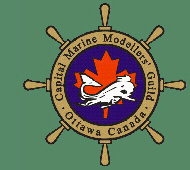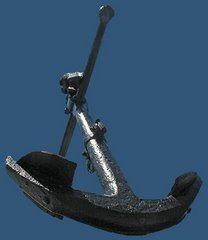This is the rather old (1966) plastic model from The Lindberg Line of the SANTA MARIA ship used by Colombus as his flagship on the sponsored voyage to find the western route to India. The real ship had two names: the Santa Maria (Saint Mary), and La Gallega (Galicia), as was common to Spanish ships of that era.
It is a Nao-type ship with 150 tonnes displacement.
Length of hull 19 m (estimates)
Beam 5.5 m
Draught 3.2 m
Crew: 42 persons including Captain Juan de la Cosa and Admiral Christopher Colombus (original name: Cristoffa Corombo in Ligurian)
This was a very small boat.
The model hull is a mere 18 cm long, and fits neatly in my hand.
The voyage was principally financed by a syndicate of seven noble Genovese bankers resident in Seville, with funding from Lorenzo di Pier Francesco de Medici of Fiorenza.
It is not known when Santa Maria/Gallega was built, or for how many years this used ship sailed before being impressed into the expedition. What is known is that on 25 December 1492 it sailed onto what is now Haiti and was lost while the officers and crew slept.
The first (and only exploration) voyage of the Santa Maria/Gallega began in Spain on 03 August 1492; then departed the Canary islands on 06 September; and was successful when the ships reached land at either Turks and Caicos, or Bahamas, on 12 October 1492. It took about 36 days to sail the last leg of 5700 km (straight line distance). If they were on the shortest route it would have been a speed of about 6.6 km/hr.
The group sailed around the region for another two and a half months (mostly along the north-east cost of Cuba), finding and renaming islands already occupied, until the ship was grounded on the island of Hispanolia near present day Cap-Haitien. Timbers from the ship were used to build Fort Christmas near the wreck.
No one knows for certain what the ship actually looked like or how it was rigged. There are no drawings from the time - only current conjecture based on similar ships of the era.
The model is largely out-of-box, but with a lot of painting and rigging added. I replaced the plastic vacuform sails with cloth and stitching, and replaced the black rubber ratlines. The 54 year old decals worked surprisingly well. The tender (or lifeboat) was rebuilt with provisions, oars, a sail, a mast, and tie-downs. The rear mast had to be replaced in total with a metal pole. The real ship had about 6 anchors, but only two are moulded here. I built and added all deck railings and stair railings.
The rungs on the ratlines are made from solid string which is made by rubbing cyanoacrylate glue along regular string which is stretch tight. Then the rods of string are glued horizontally onto the upright lines.
The base is a single cheap plaque from a dollar store with scribed board lines, peg holes, and weathering, and with decorative rope added around the border.
John Clearwater
 |
| Santa Maria / La Gallega ship used by Colombus on his first voyage to India, 1492 |
 |
| Santa Maria / La Gallega ship used by Colombus on his first voyage to India, 1492 |
 |
| Santa Maria / La Gallega ship used by Colombus on his first voyage to India, 1492 |
 |
| Santa Maria / La Gallega ship used by Colombus on his first voyage to India, 1492 |
 |
| Santa Maria / La Gallega ship used by Colombus on his first voyage to India, 1492 |
 |
| Santa Maria / La Gallega ship used by Colombus on his first voyage to India, 1492 |
 |
| Santa Maria / La Gallega ship used by Colombus on his first voyage to India, 1492 |
 |
| Santa Maria / La Gallega ship used by Colombus on his first voyage to India, 1492 |
 |
| Santa Maria / La Gallega ship used by Colombus on his first voyage to India, 1492 |
 |
| Santa Maria / La Gallega ship used by Colombus on his first voyage to India, 1492 |
 |
| Santa Maria / La Gallega ship used by Colombus on his first voyage to India, 1492 |
 |
| Santa Maria / La Gallega ship used by Colombus on his first voyage to India, 1492 |
 |
| Santa Maria / La Gallega ship used by Colombus on his first voyage to India, 1492 |
 |
| Santa Maria / La Gallega ship used by Colombus on his first voyage to India, 1492 |
 |
| in the shipyard... |
 |
| The 1966 model kit box |
 |
| Confused Europeans claiming someone else's land for Spain and the catholic church. |










